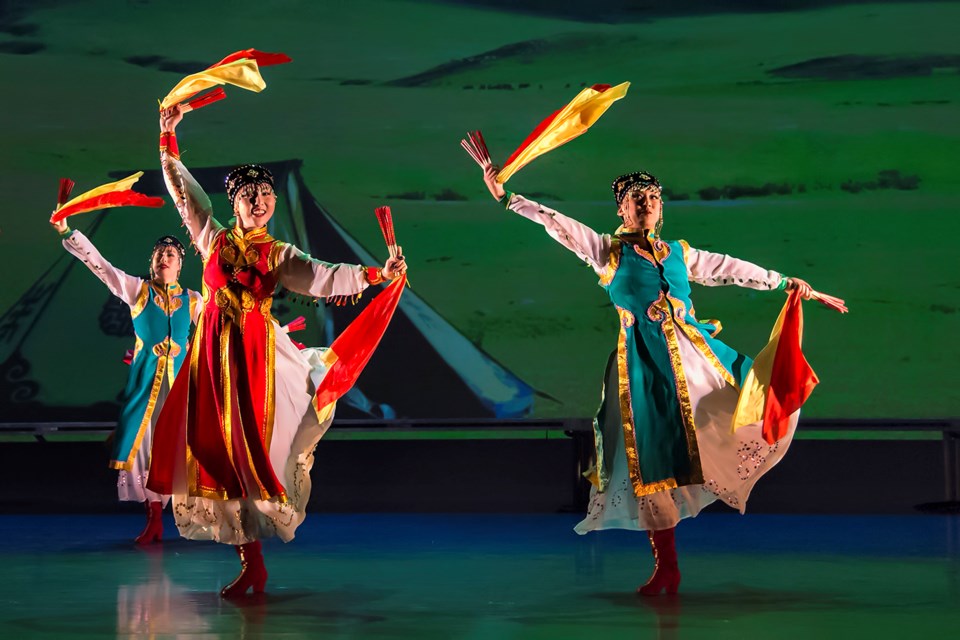It’s Asian Heritage Month, and the Bradford West Gwillimbury Public Library is celebrating with a special event this weekend.
On Sunday, May 7, we will be having the Little Pear Garden Dance Company stop by for an afternoon of dance and learning.
The award-winning dance company, led by artistic director Emily Wing-Mei Cheung, encompasses both traditional and classic styles of Chinese dance.
The name Little Pear Garden comes from China’s historical Tang dynasty era (approximately 712-755 AD), when Emperor Hsuan Tsung founded the Pear Garden Academy inside his royal court, which became the country’s first professional music and dance performance troupe.
We will welcome two of the company’s dancers — Yulia Xu and Cheryl Chan — who will perform three types of Chinese dance: Xinjiang, Mongolian, and Dunhuang.
Xinjiang
Xinjiang dance, also known as Uyghur dance, is a traditional dance form that originated from the Xinjiang Uyghur Autonomous Region in northwestern China. Xinjiang dance is characterized by its energetic, fluid movements and the use of traditional instruments such as the daf, ghijak, and dutar. Xinjiang dance is often performed as a group, with dancers wearing brightly coloured costumes and headdresses that are decorated with intricate patterns and designs. The dance form is often used to celebrate festivals and special occasions such as weddings and religious events.
Mongolian
Mongolian dance is a traditional dance form that originated from Mongolia. Mongolia has a rich cultural heritage that includes music, dance, art, and literature. Mongolian dance is characterized by its rhythmic footwork, which often involves stomping and jumping, as well as the use of props such as swords, drums, and horsehead fiddles. The dance form is often accompanied by traditional Mongolian music, which features throat singing, long songs, and other unique vocal and instrumental techniques. Mongolian dance is an important part of the country’s cultural identity and is performed at festivals, ceremonies, and other special occasions.
Dunhuang
Dunhuang dance has a long history, dating back to the Tang dynasty in the seventh century, when Dunhuang was an important centre of trade and culture along the Silk Road. At that time, dancers would perform for the royal court and for religious ceremonies in the caves. Dunhuang dance draws inspiration from the art and culture of the Mogao Caves, as well as from the region’s history and natural environment. The dance form is characterized by its graceful, flowing movements and the use of colourful costumes and props.
I am delighted that the Bradford West Gwillimbury Public Library and Cultural Centre is able to host such talented performers in our space. Exposing ourselves and our kids to performing arts, especially that of other cultures, is so important and enriching. When I was a kid, my mom and aunts took my sister, cousins, and me to various theatrical productions. It really did inspire us to create our own stories, plays, and dances, which we would then perform for our parents. (Thankfully, there was no social media around at that time.) I will always cherish those memories with my family.
Thanks to our manager of cultural services, David Di Giovanni, for helping organize this special event, which is sure to be a fun afternoon.
After the show on Sunday, you are invited to stay for the company’s workshop and Q&A period.
While you’re here, feel free to check out some reads from our Asian Heritage Month book list, curated by our information specialist, Siiri Khamis:
Asian Canadians Authors and Themes: libraryaware.com/2RZF43
Asian Voices for Adults: libraryaware.com/2RZJ1E
Asian Heritage Month has been celebrated in Canada since the 1990s and was officially designated in May 2002.
This month, we celebrate those who have made the journey to Canada from all Asian countries and share with us their cultures and traditions while contributing to the fabric of our community through arts, culture, science, business, and beyond.
’Til next week, happy reading.
Natasha is the marketing and communications co-ordinator at the Bradford West Gwillimbury Public Library.



